Colombia is the second most biodiverse country in the world and a paradise for fruit lovers. Here are some fruits you can find in Colombia and are considered as superfood all around the world. Do not miss them when you visit our country or join us to our tours in Bogotá, Medellín or Cartagena to try them with us.
Pitaya
On the outside, the fruit has the appearance of a hot pink or yellow bulb with spikes and on the inside it’s white dotted with black seeds. It contains vitamin A, C, calcium, iron and magnesium, is rich in antioxidants and its probiotics improve digestive activity.
PD: Eat just one or you wouldn’t leave the WC.
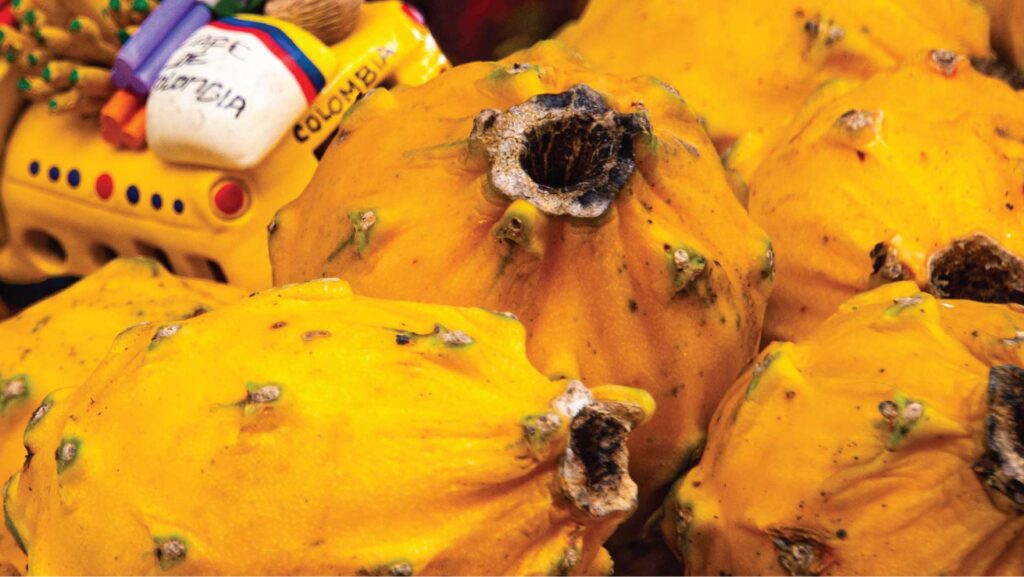
Mamoncillo
It has a sweetly acidic taste, like a mix of lime and lychee. It is a good source of vitamins A and C, fiber, phosphorus and calcium. It also produces serotonin, the feel-good hormone.
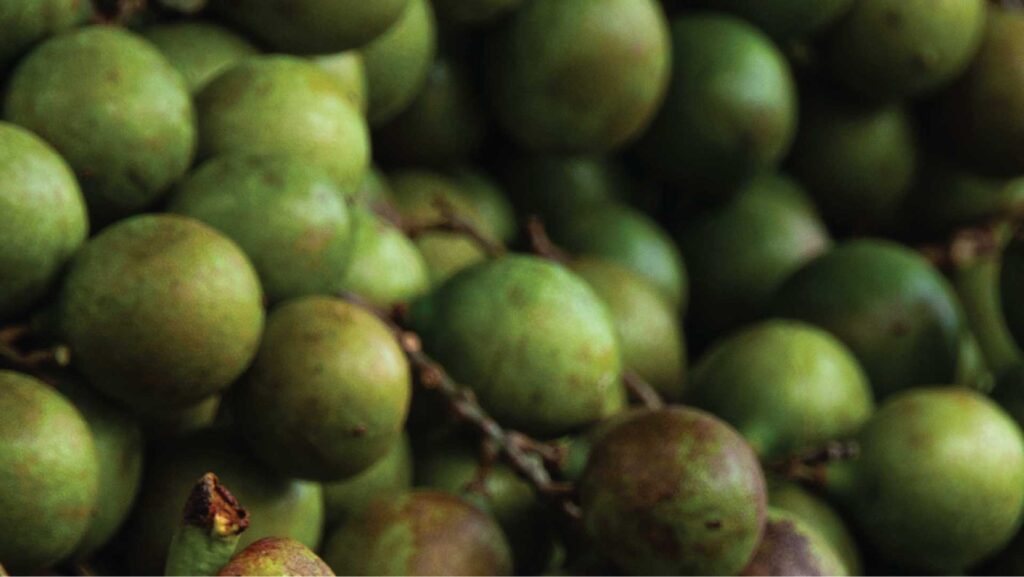
Mangosteen
It is an exotic, tropical fruit with a slightly sweet and sour flavor. It’s highly nutritious as it has fiber, vitamin B1, B2, B9, C, manganese and magnesium, it also contains antioxidants and anti-inflammatory properties.
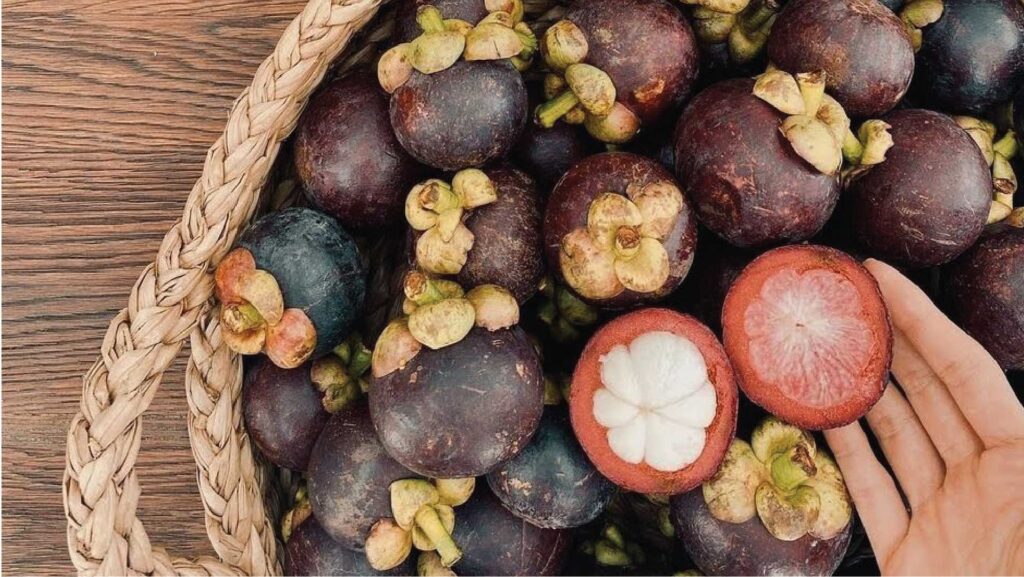
Rambután
This fruit is related to the lychee, it has a sweet creamy taste and contains a seed in its middle. It’s not really popular in Colombia and we are not taking advantage of its health benefits such as:
- Prevents cancer
- Contributes to a stronger immune system
- Promotes healthy digestion and offers a good dose of minerals, vitamins and antioxidants.
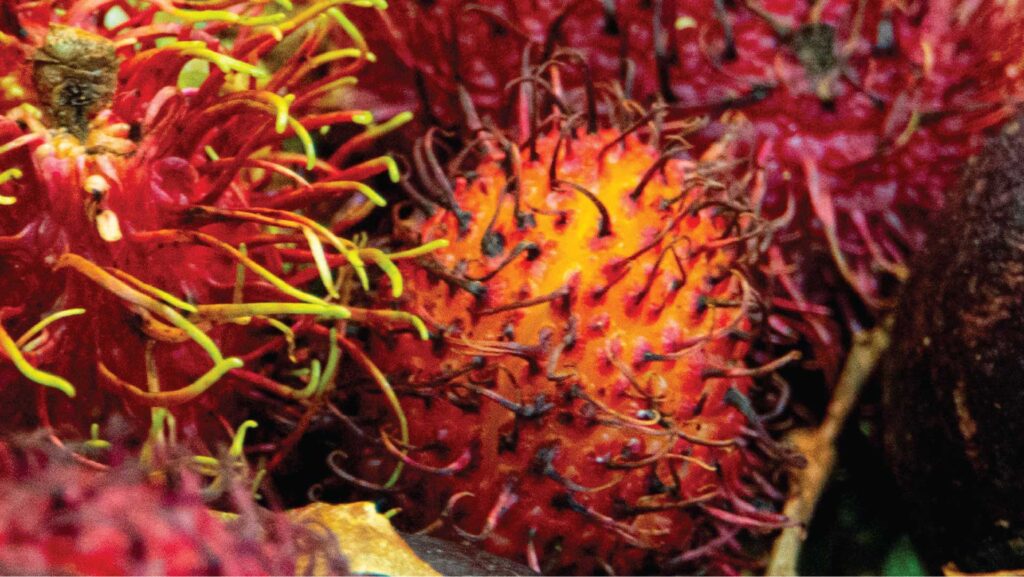
Chirimoya / Cherimoya / Chirimoya / Anone
Due to its creamy texture, cherimoya is also known as custard apple. It is rich in fiber, vitamins, antioxidants, and minerals. This unique fruit may:
- Support immunity
- Reduce inflammation
- Boost your mood
- Prevent high blood pressure
- Promote eye, heart and digestive health.
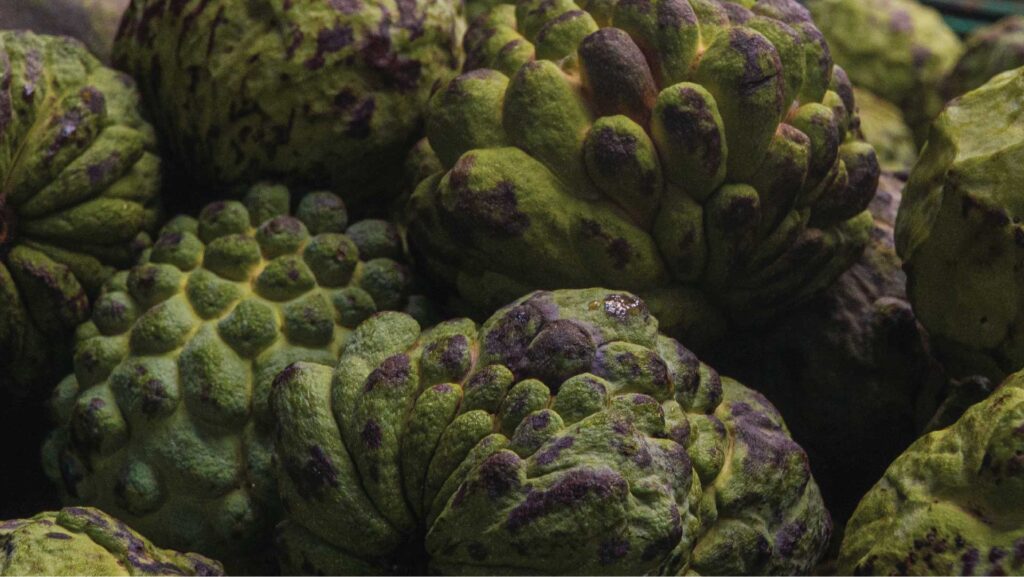
Granadilla
It Is a round fruit with a hard and shiny orange skin. It contains a jelly-like pulp with seeds that are edible and it has a sweet taste. Don’t chew the seeds, just swallow them. It’s a good source of fiber, vitamin A and C, potassium, copper, iron, magnesium and phosphorus.
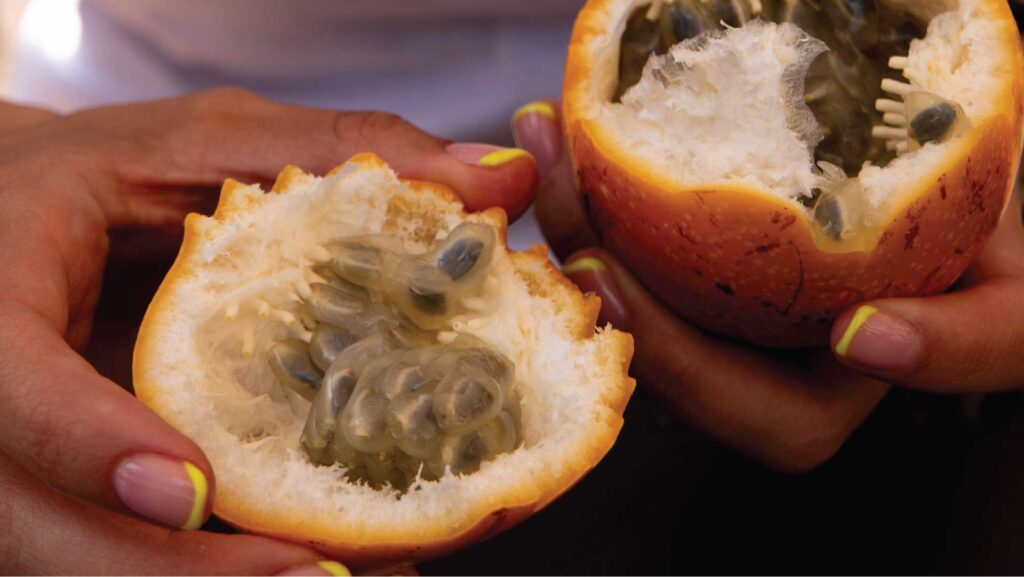
Chontaduro
It must be cooked. It tastes like sweet potato and you can eat it with honey and salt. It’s really common in Valle del Cauca and people believe it has aphrodisiac properties. The facts says it is a good source of fiber, which is good for your digestive system. It provides vitamin A, C and E, and magnesium, phosphorus, zinc, copper, iron, and calcium.
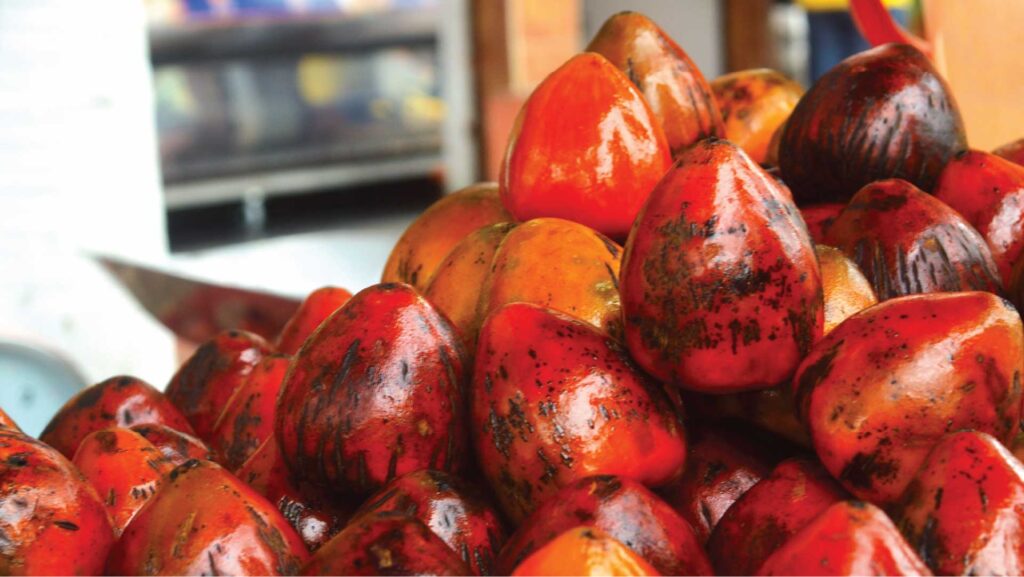
Lulo
Is an acidic and very fragile fruit, but one of the favorites in Colombia and also among the tourists. It’s famous for the Lulada, a popular drink in Valle del Cauca with lulo pieces with ice and panela. It’s full of vitamins A and C, calcium, iron, phosphorus, fiber, niacin, riboflavin, which boost the immune system, and thiamine which is a natural repellent.
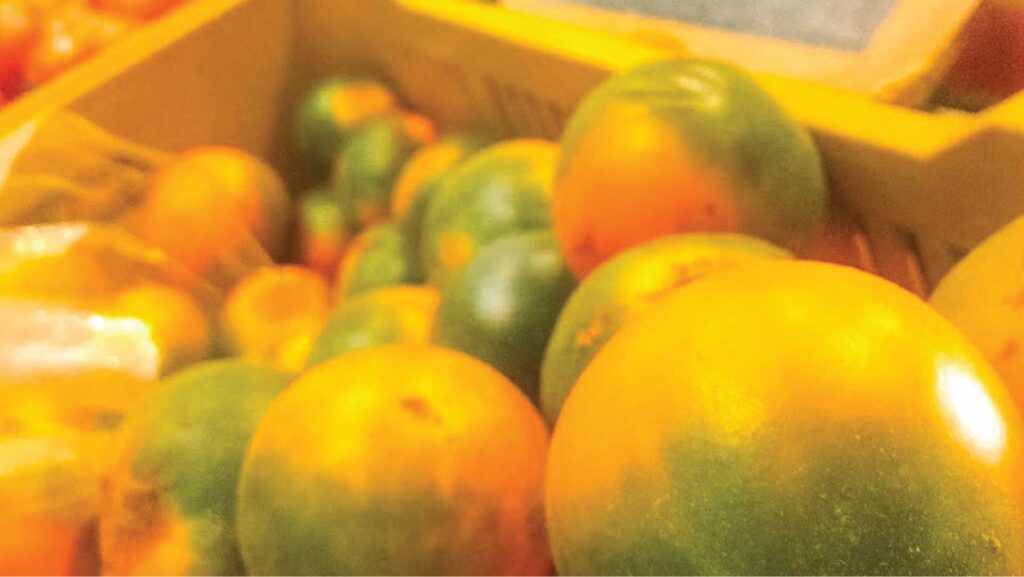
Guama
It’s known as ice cream bean, as it is sweet as a banana but the texture is way different. It has anti-inflammatory properties, it helps the respiratory system, regulates blood sugar, is considered as a super food and controls high blood pressure. People also attribute aphrodisiac properties to this fruit.

Feijoa
It has a mix between acidic and sweet. Boyaca is the region where it is more popular and in Tibasosa, which is considered the cutest town in Boyaca, they make sabajon, a typical liquor made out of this fruit. It also maintains bowel health, controls blood sugar levels and lowers your risk of heart disease or cancer.






